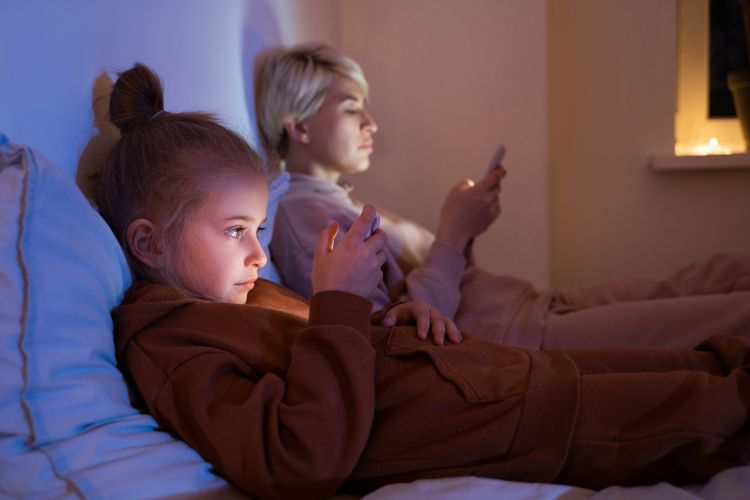Helping your family sleep better at night: tips for managing screen time before bed
Simple strategies to reduce screen-time sleep disruptions

Are the young people in your family getting the sleep they need to grow, learn, and thrive? Sleep is crucial for our health at every age, but it plays a particularly important role in the physical, mental, and emotional development of children and teenagers.
According to the American Academy of Sleep Medicine, children aged 6 to 12 years require 9–12 hours of sleep per night, and teens aged 13 to 18 years should aim for 8–10 hours. However, many young people aren't getting enough quality sleep, and one common reason is screen time, especially close to bedtime.
How screens affect sleep
A growing body of research suggests that evening use of screen-based devices, such as smartphones, tablets, laptops, gaming systems, or TVs, can disrupt the ability to fall and stay asleep. Even simply having a device in the bedroom, whether it's in use or not, has been linked to reduced sleep duration and increased daytime sleepiness in children and adolescents.
Here's why:
- Blue light from screens can disrupt the body's natural sleep-wake cycle by suppressing melatonin, a hormone that helps us fall asleep.
- Interactive content, such as social media, videos, or video games, can overstimulate the brain, making it harder to wind down.
- Notifications or the urge to check messages can interrupt sleep throughout the night.
A 2023 published review in Sleep Health found that higher screen use is associated with delayed bedtimes, shorter sleep duration, and poorer sleep quality in children and adolescents.
What parents and caregivers can do
Technology is an integral part of everyday life, but families can take steps to create healthier screen habits, especially around bedtime. Here are a few practical tips:
- Set a "No Screens Before Bed" rule: Encourage everyone in the household to power down devices at least 30 to 60 minutes before bedtime. Use that time for calming activities, such as reading, listening to music, or taking a warm bath.
- Keep devices out of bedrooms: Make bedrooms a screen-free zone, especially overnight. Charging devices outside the bedroom can remove temptation and help improve sleep for everyone.
- Create a family media plan: Managing screen time is easier when families work together to set shared expectations. Families can set daily screen time limits, create screen-free zones and designated times, discuss online safety, and model healthy tech habits together.
- Use built-in tools to limit exposure: Many phones, tablets, and computers now have built-in settings to reduce blue light in the evening (like night shift or night light). You can also set usage limits or schedule downtime using parental controls.
- Be a role model: Young people learn by example. Try to limit your own screen use at night and join in on unplugged family activities, such as playing board games, solving puzzles, or taking evening walks.
- Practice good sleep hygiene: Stick to a consistent bedtime and wake time each day, including weekends. Establish a calming wind-down routine before bed to help signal to your body that it’s time to sleep. Ensure your sleep environment is comfortable by keeping the bedroom cool, dark, and quiet.
If you want to learn more about sleep hygiene and find ways to improve your family's sleep, consider enrolling in Michigan State University Extension's SLEEP (Sleep Education for Everyone Program). SLEEP is a six-week program that offers guidelines to help adults improve sleep hygiene practices, which are behaviors that enhance sleep quality. For more information, visit the SLEEP website.



 Print
Print Email
Email

